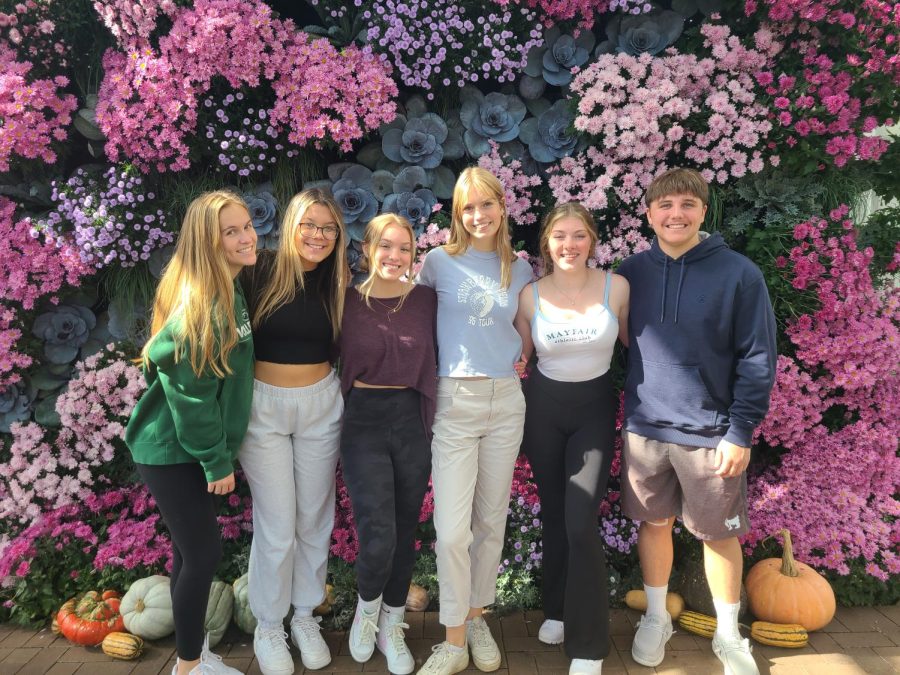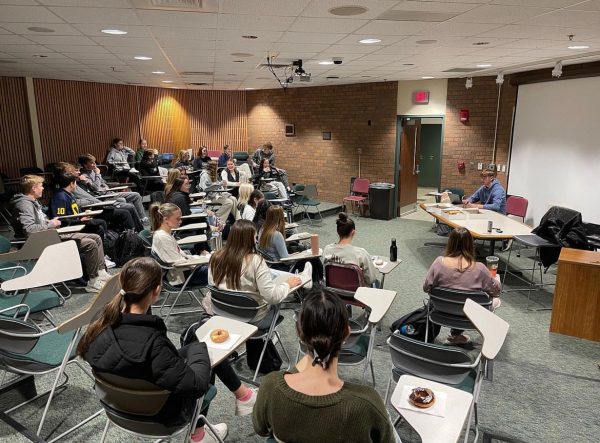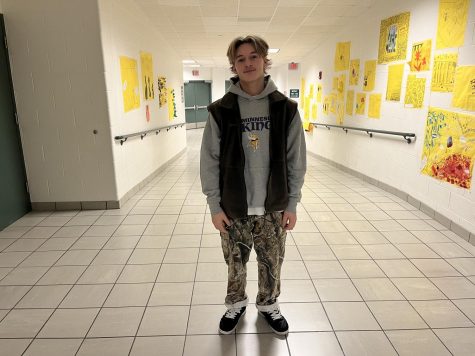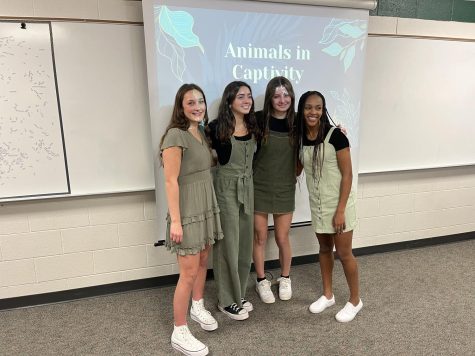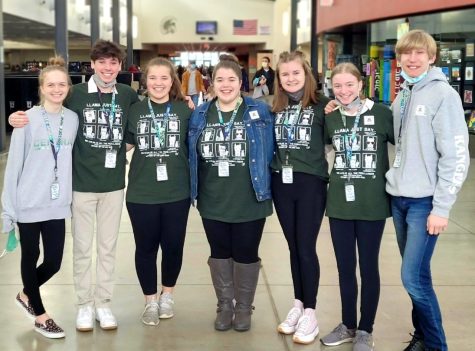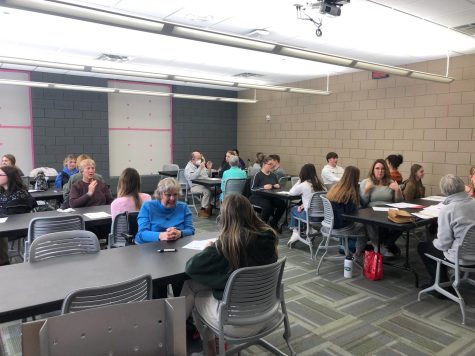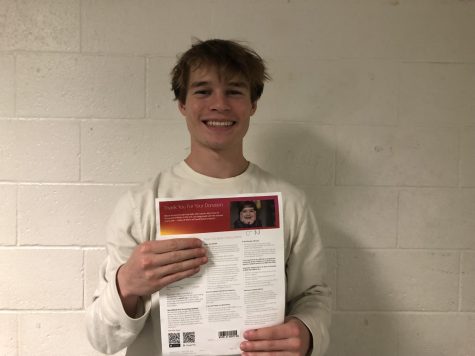School trips give students the chance to embark on an adventure with endless opportunities
A picture of a group of students that attend the ASL field trips.
Field trips in high school can have a plethora of interpretations, but for American Sign Language teacher Kimberly Anderson, they are eye-opening opportunities for students to bond.
“I think it’s really cool for [students] to get out of the classroom and see what they can do that’s not in a book and not on a video,” Anderson said. “When we go places, we get a chance to bond as well, and it’s a good team activity to become closer as a group, which is fun too.”
For Anderson, school trips have only added to the educational aspect of ASL and have provided her students an opportunity to collaborate in a meaningful and impactful way. Every year, she aims to attend the same trips more than once per semester and is currently in the process of doing her “Senior Citizen” trip. This is an experience she started a couple of years ago and one she thoroughly enjoys.
“Every Thursday, for six weeks, we drive over [to] the Fine Arts Center,” Anderson said. “Through our Forest Hills Community Ed. program, [people] sign up to learn sign language, [and] it’s open to any adults or senior citizens to come. My students become their buddies, so every adult has one of my students, and then each week, they meet together with [the] same person and complete a lesson and learn to communicate with each other in sign.”
Yet, what’s so intrinsic about this trip is the correspondence aspect of it. Students are not only learning how to sign, but they’re also understanding how to effectively have a conversation with their buddy.
“It’s really unique and special because my students know where they picked up,” Anderson said. “They know what speed to work with and what their [buddies] interests are, so it’s just a really neat opportunity and experience for all ages to come together because of sign language.”
Although every class is different, almost every course takes some sort of trip during the year. Art teacher Grace Stynes has obtained amusement from being able to travel in large groups and having her students gain the most out of these adventures.
I think it’s really cool for [students] to get out of the classroom and see what they can do that’s not in a book and not on a video.
Every year, the art department tries to go on the same two trips to Art Prize and Chicago. But this year, Stynes wanted to do something different and added a little twist in her travels.
“This year, I [decided] to do an AP field trip, so AP Studio Art went on a field trip to Saugatuck,” Stynes said. “We went to the Saugatuck Center of the Arts, and we also went to the beach in February on a very snowy day.”
What sets Styne’s field trips apart from other classes is the environment that she cultivates, mainly of exploration. One aspect that she notices a lot when she goes on these trips is the learning that goes on outside the classroom.
“I think [it’s] really wonderful to get out of the normal structure [of] day-to-day school that we have because we’re so used to being a part of it,” Stynes said. “When you go on a field trip, [it’s] a different kind of learning, [and] it can be really helpful for students to take [in all] that learning and interest [because] it puts all of the emphasis on them.”
Although there is a lot of effort that goes into arranging the trips, Stynes hopes that her students will continue to deepen their academic endeavors outside of school. One of her favorite festivities for students includes completing assignments that entail art components in them.
“I’m a big fan of field trip scavenger hunts,” Stynes said. “In the past, [I’ve] usually [had] students use an app where I assign them things to do. It’ll be something like, ‘You and your group have to recreate a painting in front of the painting, pick a photo of it, and submit it through the app.’ It’s a lot of fun because then it’s not just [having] to write an essay when we get back, [and] it puts the learning into the field trip.”
Regardless of the series of events that play out on these trips, one thing is for sure: memories are continuously being made. This was evident for senior Sarah Bethel who had the opportunity to go to Disney World with her choir class last year.
“The first night, we played a card game at the hotel with a mix of people that we wouldn’t have hung out [with] if we weren’t there,” Sarah said. “We got to meet other people [such as] the seniors, and I feel like it really formed good friendships that we still have to this day.”
Even though this trip allowed Sarah to create more memories and everlasting friendships, every trip has its downsides. From flying on the plane to getting COVID-19 tested to eventually having to wait in laborious lines at Disney World, Sarah has nevertheless continued to look on the bright side of everything.
“[We were] waiting in line for this one ride [on] our last day,” Sarah said. “It was raining, and we were all exhausted, crabby, and hungry. I was trying to get everyone in a better mood, [so] I was talking in a southern accent to make everyone feel better.”
Despite all the planning and effort that goes into these trips, at the end of the day what matters most is that the students are having fun. What’s most important for Anderson is the mindset aspect of it.
“[School trips] encourage the kids to get out there,” Anderson said. “It’s encouraging them [because] I’m [challenging] them to see how much they have learned and to go out there and use [what they learned]. I’m telling them they’re great [because] I want them to see it and [push] them to do so.

Arpita is a senior entering her third and final year as a staff writer on The Central Trend. She has been a part of the Science Olympiad team since the...





















































































